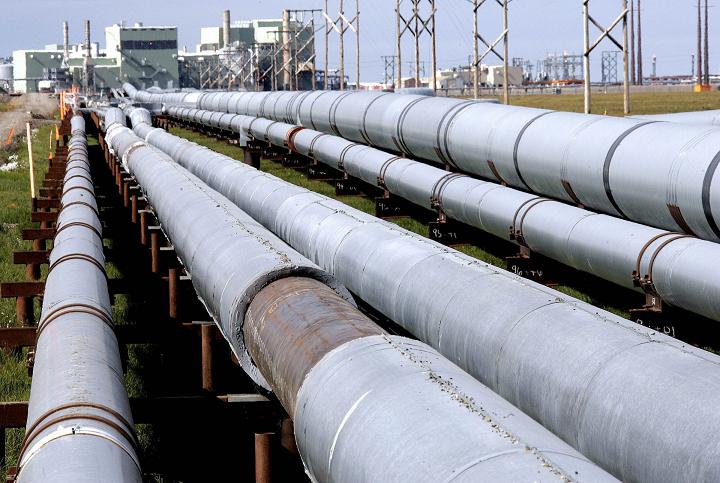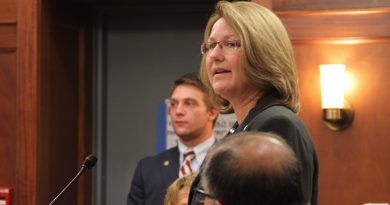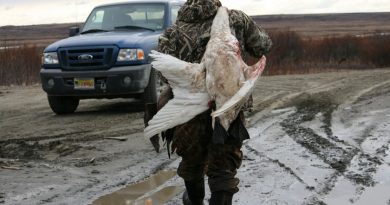Fact check: Breaking down BP investment in Alaska’s oil patch

Turns out the $1 billion that BP recently announced it will spend to boost oil drilling on Alaska’s North Slope over the next five years is a cost that will be borne by BP and the state’s other oil producers — not an investment from BP alone.
BP’s press release — along with Alaska Dispatch and other news media — had made it sound like only BP would make that investment, which included adding two new drilling rigs to its fleet of seven.
Alaskans are desperate to hear of new oil investments because production has fallen low enough to put state services at risk. Many were likely pleased to hear of the $1 billion investment, and may have viewed it as a large undertaking by a single company. But the expenditure seems far less significant when it’s diluted among some of the largest oil companies in the world.
Janet Weiss, earlier this year named president of BP Alaska, told reporters in Anchorage on Wednesday that the additional $200 million per year would be borne by BP and its Prudhoe Bay co-owners: Exxon Mobil Corp. and ConocoPhillips primarily, with Chevron owning a tiny share.
She said the London-based oil giant, which operates the Prudhoe Bay field, has always made it clear that the effort would involve co-owners. However, the BP press release in early June announcing the new spending makes no such clarification.
The release did say that because of the Alaska Legislature’s recent tax cut for oil producers, the co-owners had agreed to consider spending $3 billion in proposed development projects in the western region of Prudhoe Bay. But that is a separate endeavor from the $1 billion boost.
Weiss, speaking with reporters after her speech at the Resource Development Council’s annual meeting luncheon, said other announcements of new investment will also help to cover the cost of the tax cut to the state treasury, estimated at more than $700 million and primarily benefitting BP, Exxon and Conoco.
For example, ConocoPhillips has said it plans new investments in the Kuparuk field where it is the majority owner, thanks to the tax cut. And during her speech, Weiss announced for the first time that the tax break has enabled BP to plan on drilling 16 new wells in the Sag River formation in 2015 and 2016.
The cut will also allow BP to re-evaluate the economic viability of the Northwest Schrader prospect in the Milne Point field, a potential $2 billion investment where BP has 100 percent ownership, Weiss said. The field has yet to overcome technical hurdles, Weiss said. She noted that it was sidelined under the current tax system, pushed through in 2007 by then-Gov. Sarah Palin’s administration. The system was based on heavily taxing oil production as North Slope crude prices rose.
Critics of the tax cut have blasted announcements of new work by the companies, saying the work would have happened anyway and that planning had already started under the present tax system.
On Wednesday, the large pro-industry audience at the luncheon applauded Weiss after she announced the new wells and other details about the Sag River effort. But some of what she’d said — such as that full development could spawn 200 new production and injection wells — had been described by BP official Damian Bilbao more than a year ago.
Weiss, a longtime resident of the 49th state and the first Alaskan to run BP Alaska, told reporters the tax cut — known as Senate Bill 21 and the More Alaska Production Act — would allow Sag River to happen on a speedier timeline than under the existing tax regime. It’s possible that Sag River may not have happened at all under the existing tax, she added.
BP’s ‘mid-life crisis’
In her speech, Weiss said BP was at “midlife” in Alaska, having produced less than half of the oil and gas in its Alaska portfolio. But the outgoing tax system was BP’s “mid-life crisis,” and led to declining investment on the Slope.
With the new tax, Weiss said she was excited to work together with others to “turn prospects into projects and potential into new production that will sustain us for decades.”
As for BP’s announcement in early June, the company said:
“BP … is planning to add $1 billion in new investment and two drilling rigs to its Alaska North Slope fields over the next five years due to changes in the state’s oil tax policy signed into law this month by Gov. Sean Parnell. These plans call for an increase in drilling and well-work activity, the upgrading of existing facilities and the addition of up to 200 new jobs in the state, giving a boost to both the company’s operations and the state’s economy.”
Asked why BP’s June 3 press release didn’t clarify that the $1 billion investment would include its co-owners, BP spokeswoman Dawn Patience said the release was issued by BP on behalf of Exxon and Conoco, which own a 36 percent share of Prudhoe Bay, as well as Chevron, which owns a 1 percent share.
“All numbers in the release are gross numbers — we were clear about that in follow-up questions from the press,” she said. “The key point, though, (is that) the tax changes in Alaska made it possible for BP to move these projects forward and gain the support of the Prudhoe Bay working-interest owners to proceed.”
BP’s press release never clarified it was being issued on behalf of Prudhoe’s co-owners. Major media outlets, including the The Associated Press and the Fuel Fix blog at The Houston Chronicle, also made it look like BP alone was investing that money.
The Financial Times of London, which apparently spoke with Weiss, got it right, saying “BP, ExxonMobil and ConocoPhillips plan to invest an additional $1 billion in the North Slope of Alaska over the next five years.”
How will the expense be shared? Each owner pays its share of the capital costs after BP has paid. The costs are broken down on the percent each company owns.
Essentially, that means Conoco and Exxon will pay about $72 million a year of that increased capital cost. BP will pay about $52 million, and Chevron will pay about $2 million.
Patience said Conoco’s investment at Kuparuk, which included bringing an additional rig to the field, would also be a shared cost involving capital investment from other owners, primarily BP.
“BP operates Prudhoe Bay — just as Conoco operates Kuparuk. The operator makes the expenditure,” Patience said.
Contact Alex DeMarban at alex(at)alaskadispatch.com



